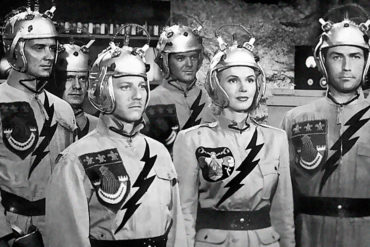It wasn’t enough.
Session after therapy session, and I’m still terrified. Of what, I don’t know.
My new job is killing me. Why, you ask? That’s the problem. I don’t know.
I go to class. I come prepared. Despite challenges, I’m learning how to manage and inspire and nudge creatively. I leave class on a high. This is the life.
On the subway ride home, however, I come abruptly down. It descends like a giant holding onto my shoulders, gripping. I feel possessed, scared, ruminating about little things I may have done wrong.
I try to let it go. It takes me days. When I’ve finally expelled the negative energy from my body, it’s time to return to class again. And the cycle repeats itself: excited anticipation, performance and exuberance, followed by painful horror and gripping defeat.
Recuperation takes days. I’m in a consistent state of needing to be alone in a porcupine-prickly-pear type of way. Not a great state of mind for a mother with three small children. “Hey kids, would you mind being quiet and not asking me for anything in the next few days?” Yeah.
I speak with my therapist, whose intellectual, cognitive-behavioral approach and psychodynamic training has benefited me tremendously in the past. But something, now, isn’t enough.
“You seem nervous by something I am saying,” she says one day. “Can you tell me why?”
I surprise myself along with her when I respond, “This isn’t working. I can’t get to the bottom of the problem. I think I need to try with somatic work.”
I had recently become familiar with somatic work when my friend, Henny Stern, invited me to one of her Accepdance workshops, in which she blends her experience as a dancer, psychotherapist, and somatic training to give participants tools to access their inner self through the body.
“Somatic therapy,” she explains the first day, “believes that our bodies are where our unconscious is stored.”
Yes. Truth. That sentence resounds clear and strong throughout my bones. Our bodies are where our unconscious is stored.
We know a person’s feelings by examining their face. Our bodies are where our unconscious is stored. Intense weight gains or eating disorders reflect upon the person’s inner state.Our bodies are where our unconscious is stored. The place it resounded loudest was in Jewish concepts regarding the sanctity of our bodies and this physical world.
According to Chassidic thought, Gd wants to descend to the lowest level, the physical, finite world, which also has the greatest potential. The lowest can go the highest, the philosophy goes. Through elevating the physical, we get to the greatest heights. We thus focus on all of the neurotic mitzvahs that are buried within the physical world, strange measurements and exact time specifications, that hold grip onto the holiness of physicality, buried deep within. Jews, we say, don’t deride intimacy. We believe the physical act is holy, and the physical act on Shabbat, stuck in the physical world at a physical time frame, is the holy of holies.
Our bodies are where our unconscious is stored.
My blissed-out body thanks me every time I come home from Henny’s classes. I continue classes with her, learning how to get in touch with my body when I experience emotions or difficult situations. I practice “resourcing”; alternating between thoughts and sensations of comfort before diving into the deep dark. I sense the delicate blooming within my chest of happiness or gratitude. I locate where in my body I feel anxiety and when. What that anxiety feels like. I learn to take care of the flesh and fat and bone that surrounds my soul and give it attention and care. I learn how to listen better to others and give space and kavod to their bodies as well.
Weeks later, stuck and paralyzed within my body as I deal with the new challenge of teaching, I look to my body for some answers.
I ask Henny to do individual somatic work with me. She agrees, and I enter her office, hopeful.
The calm of the office automatically relaxes me. We begin with meditative work as she asks me to pay attention to my body.
In this sensory-focused, intuitive state, we talk about the class. I speak to her with my eyes closed. She asks me to imagine myself teaching, and we discuss a scenario.
“Where do you feel it in your body?” she asks, and I respond, with great surprise, that my left hand is feeling an immense amount of weight. It hurts. I am aware of the unexplainable strangeness of this, yet I also can’t deny it’s happening.
We talk about what, on a conscious level, is coming up while I’m feeling the pain of my left hand. Words come from me smoothly, as if I’m talking to my closest, most intimate friend.The trigger points of my teaching experience become clear, as I discuss the delicate sensitivities and associations I have with the teaching experience and atmosphere.
She asks me what makes me feel happy about teaching. My eyes well up. The nurturing atmosphere of somatic work often precipitates the release of my tears.
I tell Henny about the feeling I receive when witnessing a student’s “aha!” lightbulb moment, at the moment that they grasp how to see and draw differently. The pride and excitement from their discovery, I explain, smiling with my eyes closed as I remember, fills me with equal pleasure and thrill.
As I say this, I sense the change in the atmosphere of my body. A vibration around my heart blooms. A light pressure on the top of my chest taps up against my skin, bursting to come out. I tell Henny about these sensations. I no longer notice my hand.
“These are your roots,” Henny says, “this is your gift.”
I return to class more conscious of my triggers and most of all, what I can offer. I feel stronger in my abilities and more understanding of my fears. The intensity of my after-class anxiety attacks lessens a good fifty percent.
I continue somatic work, slowly unpacking it, body by body. The two halves of me, physical and emotional, coalesce. My body has memories my brain doesn’t understand, and situations that remember and trigger my body to react without my mind’s consent. I work to listen to its wisdom.
Exposure to somatic work deepened my appreciation for the precious flesh-bound package I was given in the womb. How holy are the chariots of our bodies. How long we chug them along without learning how to sit and work with what they have to share.
We who have invested in our brains need to invest in our bodies, the holy holders of our deepest unconscious. This, I am certain, is the only path to complete personal and collective redemption.





